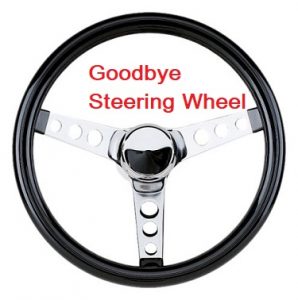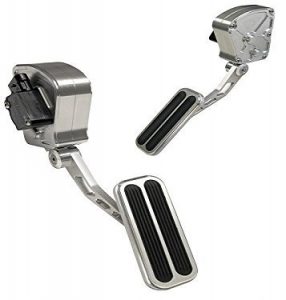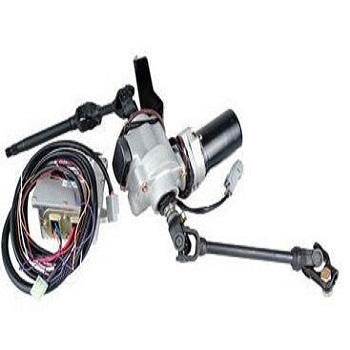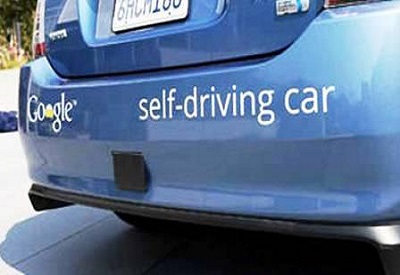Review Problems with Driverless Car Technology

Many automotive consumers think driverless car technology has only been around for a few years. However, back in the 1980s, engineers started to develop systems to support driverless car technology. In order to push this dream of an automobile that requires no human interaction, car makers needed to lay down the foundation first.
They needed to take everything in a vehicle that operated with a hand or foot and develop an automated system to control these functions. In addition, they had to get rid of any mechanical cable that performed an action. These individual systems required a complete redesign so electronic devices could operate them remotely. As an example, let me take you down memory lane, all the way back to the late 70s and early 80s.
When you needed to switch your automotive heating and air-conditioning settings from cold to hot you pushed on the temperature knob and slid it in the opposite direction. Automotive engineers replaced this manually operated cable with a control unit and an electric motor that mounts on the temperature door. This controller sends a signal to move the door. With the manual cable gone and electronics in place, voice control can handle the operation in a driverless car setting. Let’s talk about a few major systems that also eliminate the manual driver input and the problems with driverless car technology.
Driverless Car Throttle Control

My favorite example of one of the first manually operated automotive cables to reach extinction is the throttle cable. On cars and trucks, for the first 100 years, when you pushed on the gas pedal it operated a cable that moved the throttle. When you let up on the gas pedal, a heavy return spring instantly closed the throttle plates. This reliable system had to go.
In order for driverless cars to work they started installing drive-by wire systems in the mid-80s. German cars like the BMW 7 series and Audi automobiles deployed some of the first full production drive-by wire throttle systems. Not surprisingly, this led to some of the first sudden acceleration syndrome complaints from car owners. However, when an accident occurred due to unexplained acceleration, the blame fell to the driver.
Nevertheless, reports continued pouring in from drivers that said they understood the difference between the brake pedal and the gas pedal. In 2007 Toyota attributed the problem to driver-side floor mats that became out of position and pushed on the gas pedal. They call this condition floor mat entrapment. The car company offered to secure the mats so that they didn’t move.
Then they said, “The issue involves a friction device in the pedal designed to provide the proper “feel” by adding resistance and making the pedal steady and stable”. With pressure mounting, Toyota released a recall in 2010 taking a more aggressive approach. They replaced the original throttle control mechanism, attached to the gas pedal, with an updated model. The new version integrated with the brake switch and returns the throttle to the closed position whenever the driver applied the brake pedal.
We Need Electronic Power Steering

Now that the driver doesn’t have to push on the gas pedal or adjust the temperature on the heating control unit it’s time to take the steering wheel out of their hands. In the early days of the automobile we had a shaft that connected to a steering box. This moved the front wheels using mechanical linkage. However, it took a lot of muscle to move the wheels at low speeds. Automotive manufacturers came up with power steering.
They would spin a hydraulic pump and use the pressurized fluid to assist drivers in moving the wheels. Now you could turn the steering wheel when the vehicle was completely stopped with almost no effort at all. Unfortunately, this still required hands. If a driverless car is to become an actual thing, we need to automate the steering of the vehicle. This remains one of the more interesting upgrades on the way to driverless cars. People needed the ability to override the automated steering system in case of a problem. The general public just wasn’t ready to give up the steering wheel.
Car manufacturers came up with an ingenious solution. They added an electric motor capable of taking automated commands from a steering control module. They mount this motor to the present day steering rack and pinion assembly. This left the entire steering system intact so drivers could intervene if necessary. Since they installed the electronic controls over an existing steering system complaints have been few and far between. With that said, isolated problems do exist. Toyota, BMW and Lexus, among others experienced problems ranging from bad steering motors to defective control modules. As we march to an automobile that drives itself, problems with driverless car technology continue to surface.
Real World Problems with Driverless Cars
In addition to on car problems people are now turning their attention to the fallout of a world dominated by autonomous automobiles. The elimination of jobs is starting to push its way to the forefront of the problems created by driverless car technology. Think about the displacement of the professional drivers. The LA Times reports an estimated job loss of over 5 million jobs in the United States within the first few years.
However, this continues to trickle down throughout the economy in ways many of us haven’t thought of. As an example, if the driverless car technology operates as per design intent, say goodbye to car accidents. This affects the automotive insurance industry and the mechanics that work in retail body shops. And what about the legal professionals that make their living from car accidents?
Driverless Car Technology Final Thoughts
I never asked for a 3-D television, but they developed them anyway with limited success. I never wanted to live in a virtual world where my eyes become covered by a cell phone and a face mask, but I received one for my birthday. When I get into an automobile I want to drive it, not have it drive me. Unfortunately, the driverless car train has left the station. I don’t think there’s any way to stop it. Fortunately, I still think we’re 10-20 years away from a car pulling up in front of my house to take me food shopping with nobody behind the wheel.


